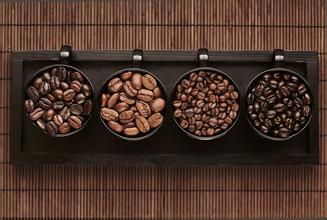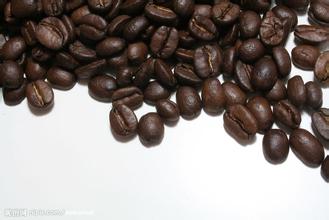Taste characteristics of coffee bean producing area in Uganda quality introduction of manor flavor description method
Introduction of Ugandan coffee beans
In the 16th century, Portuguese colonists occupied the coastal areas. In 1890, Germany and Britain divided East Africa, and Kenya was classified as Britain. The British government declared Kenya its "East African protectorate" in 1895 and changed it into its colony in 1920. Coffee was grown on large estates under British colonial rule, and the harvested beans were shipped to London for sale. The Coffee Act of 1933 was passed and the Kenya Coffee Commission was established, which in turn transferred coffee sales to Kenya. The auction system was established in 1934 and is still in use today. The following year, a draft grading system to help improve the quality of coffee was formally prepared. Kenya was founded in the Republic of Kenya on December 12, 1964 and remains in the Commonwealth. Nowadays, a variety of high-quality coffee can be produced. Kenya has made considerable progress in coffee research and development, and many farmers have highly professional knowledge of production. Kenya's coffee bidding system should help to get higher prices for producers who value quality.
Kenyan buyers are world-class buyers of premium coffee. All coffee beans are first acquired by the Kenya Coffee Commission (CoffeeBoardofKenya, CBK), where they are identified, graded, and then sold at weekly auctions, where they are no longer graded. The Kenya Coffee Commission only acts as an agent, collecting coffee samples and sending them to buyers so that they can determine the price and quality.
The best coffee grade in Kenya is bean berry coffee (PB), followed by AA, AB and so on.
PB (PeaBerry) round beans: this is the grading for small round beans. This means that there is only one stone in the coffee fruit, not the common two kernels.
E: that is, "elephant beans", the size is very large, and the output is relatively small.
AA: this is a more common grade. Coffee beans are larger in size and have a particle size higher than 18 mesh or 7.22mm. This kind of beans usually get the highest price.
AB: this grade coffee bean combines A (particle size 16 mesh or 6.80mm) with B (particle size 15 mesh or 6.20mm); accounts for about 30 per cent of Kenya's annual coffee production.
C: this grade is lower than that of AB and is rare in high-quality coffee.
TT: a lower grade, mostly consisting of small beans removed from AA, AB, and E beans. If screened by density, the lightest beans are usually TT.
T: the lowest grade, usually made up of coffee crumbs and broken beans.
MH | ML: these two abbreviations stand for Mbuni Heavy and Mbuni Light. Mbuni means coffee beans that are sun-treated. These beans are considered to be of low quality, usually with immature or overripe coffee beans, and the price is quite low. This grade accounts for about 7% of Kenya's annual coffee production.

Important Notice :
前街咖啡 FrontStreet Coffee has moved to new addredd:
FrontStreet Coffee Address: 315,Donghua East Road,GuangZhou
Tel:020 38364473
- Prev

Introduction to the characteristics, Flavor description and quality of Iron pickup and Arabica Coffee beans
Tieka Coffee introduces that this pure old variety of coffee has been growing for seven months, and next year, these seedlings can be provided to villagers in three nearby villages for planting free of charge. At that time, for every mu of coffee trees that survive, the villagers will be subsidized to plant 500 yuan to promote the development of the ancient coffee industry and let the descendants of the ancient coffee trees reproduce from generation to generation. For this, Qi Fenghua also led the villagers to increase their income and become rich.
- Next

Introduction to the quality and taste of Tarazhu coffee bean flavor description treatment in Costa Rica
Costa Rican Tarazu Coffee Flavor description: cantaloupe, durian, cranberry, rich grape juice, red wine, orange, pineapple, and other tropical fruit bombs, rich jujube tea coffee raw bean treatment honey treatment. Honey treatment originated in Costa rica. to put it simply, honey treatment is to remove the peel and flesh, and then treat the remaining pectin and internal.
Related
- Detailed explanation of Jadeite planting Land in Panamanian Jadeite Manor introduction to the grading system of Jadeite competitive bidding, Red bid, Green bid and Rose Summer
- Story of Coffee planting in Brenka region of Costa Rica Stonehenge Manor anaerobic heavy honey treatment of flavor mouth
- What's on the barrel of Blue Mountain Coffee beans?
- Can American coffee also pull flowers? How to use hot American style to pull out a good-looking pattern?
- Can you make a cold extract with coffee beans? What is the right proportion for cold-extracted coffee formula?
- Indonesian PWN Gold Mandrine Coffee Origin Features Flavor How to Chong? Mandolin coffee is American.
- A brief introduction to the flavor characteristics of Brazilian yellow bourbon coffee beans
- What is the effect of different water quality on the flavor of cold-extracted coffee? What kind of water is best for brewing coffee?
- Why do you think of Rose Summer whenever you mention Panamanian coffee?
- Introduction to the characteristics of authentic blue mountain coffee bean producing areas? What is the CIB Coffee Authority in Jamaica?

